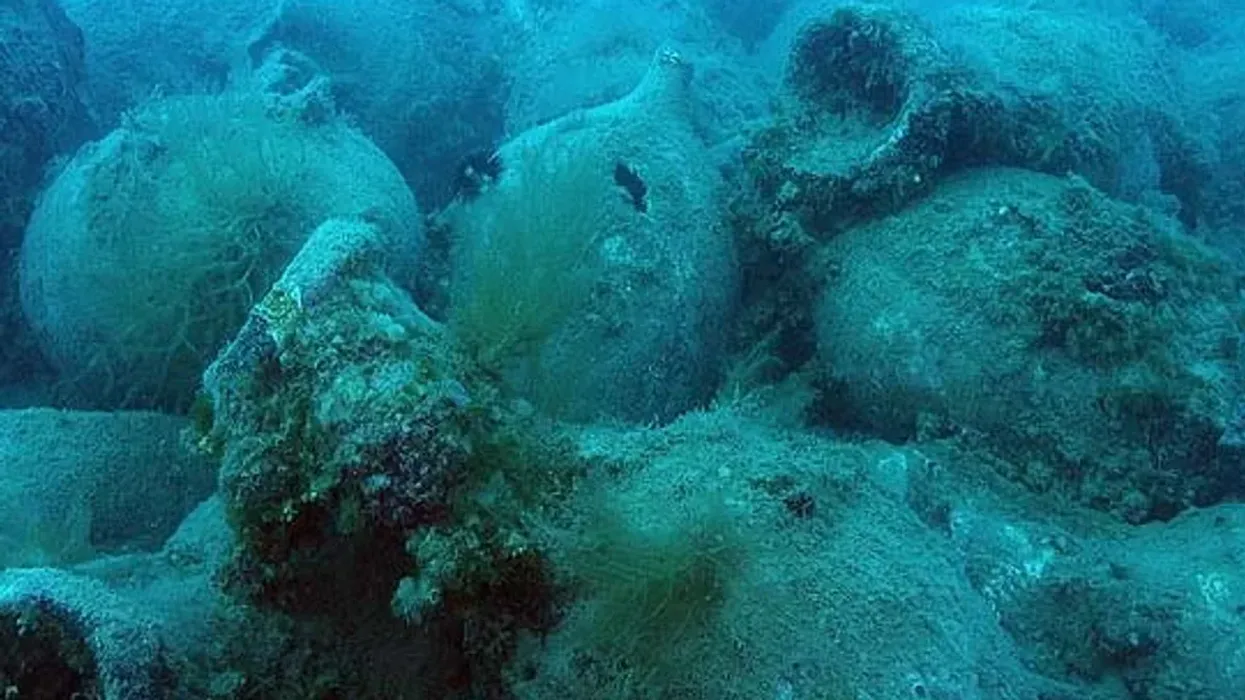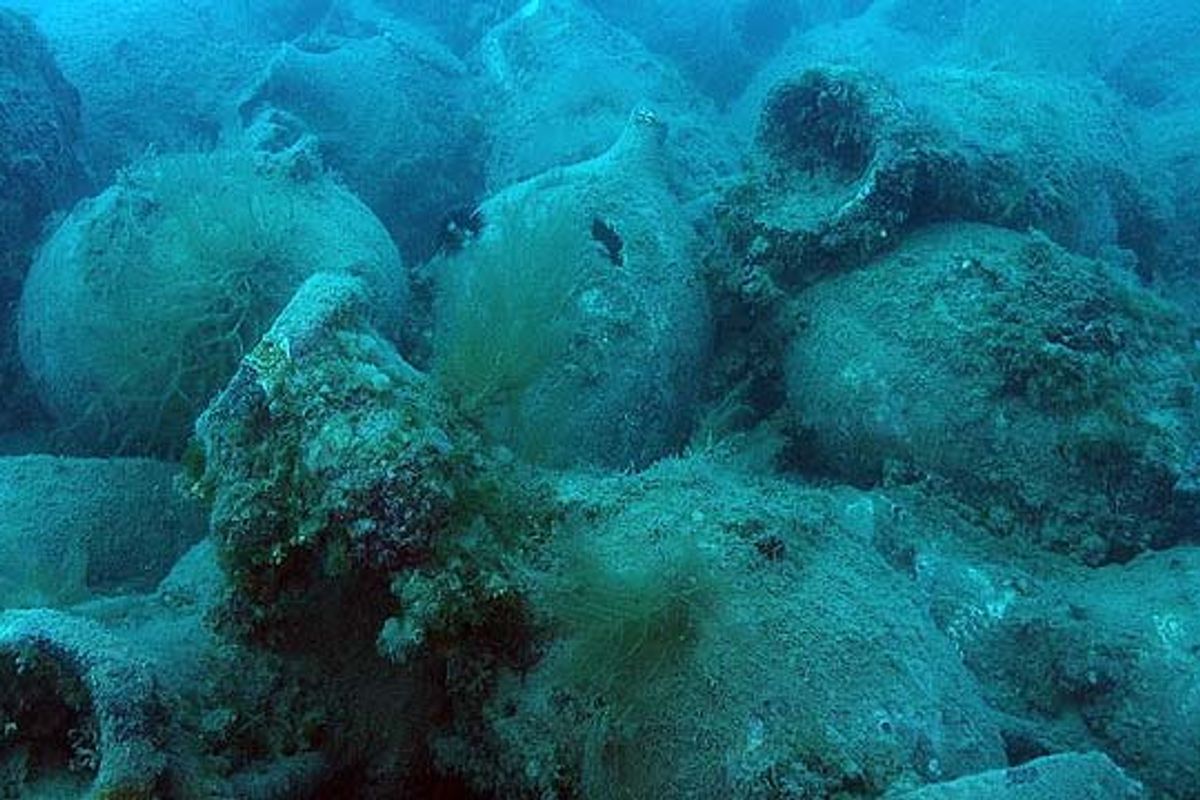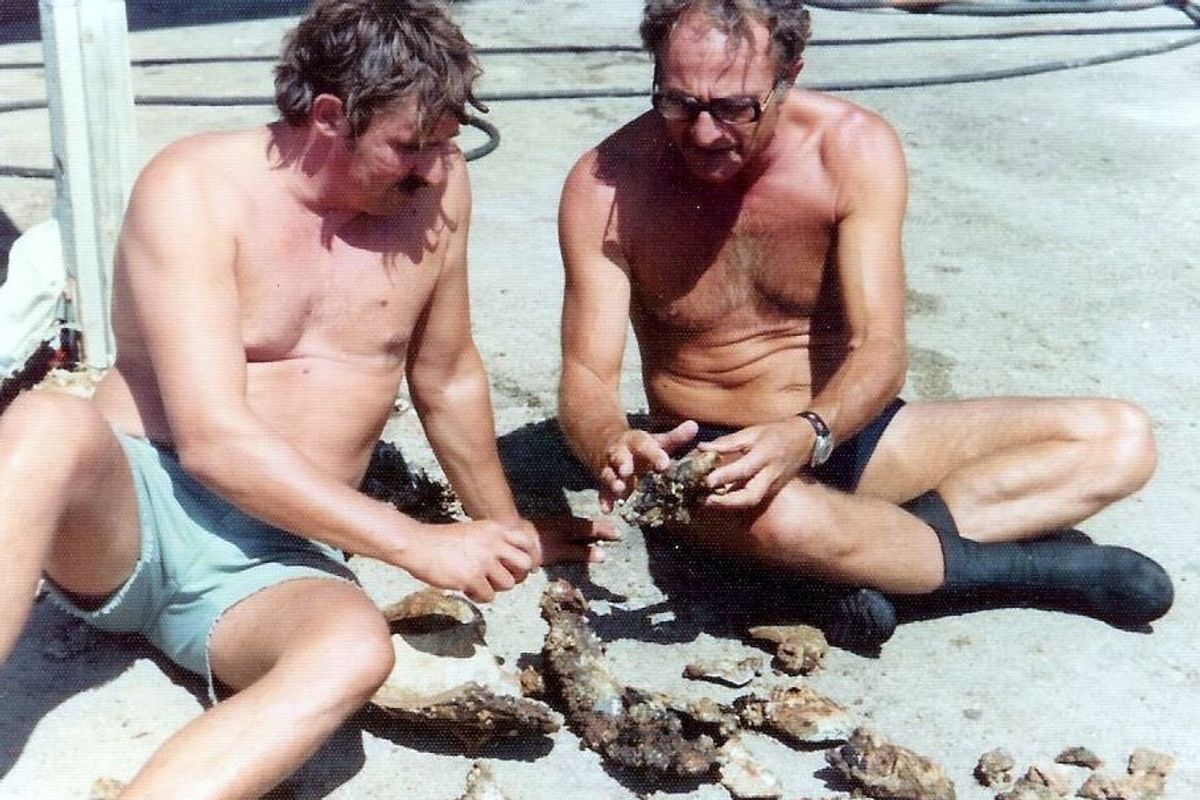Harriet Brewis
May 02, 2024

Amphoras had previously been found in shipwrecks across Europe, but never as far away as Brazil
(RPM Nautical Foundation)
It has long been established that, in the year 1500, Portuguese nobleman Pedro Álvares Cabral became the first European ever to set foot on Brazil.
And yet, a discovery made off the coast of Rio de Janeiro nearly half a millennium later has threatened to erase this claim and, indeed, rewrite the very history of the modern world.
In October 1982, an American treasure hunter called Robert Marx began exploring Guanabara Bay after receiving a tip-off from a local diver that it contained mystifying artefacts.
In its waters, Marx unearthed a large collection of tall jars, known as amphoras, typical of those used by the ancient Greeks and Romans to carry wine, water, oil and other essential goods on long journeys.
Marx, an author and self-styled underwater archaeologist, concluded that these amphoras must have been carried to Brazil on a Roman ship.
He believed that this ship may have anchored off Rio then been driven by a storm some 15 miles to where the amphoras were found more than 2,000 years later, The New York Timesreports.
If true, this would mean that the Romans landed in South America’s biggest country 17 centuries earlier than the Portuguese navigators credited with its discovery.
In other words, it would mean that the Romans were far greater adventurers than was previously thought, and Brazil would have to totally rewrite its recorded history.

In an interview with theNYT just days after the 1982 discovery, Marx insisted that he was suspicious when he first heard about the amphoras.
The jars were initially unearthed by a diver named Jose Roberto Teixeira in 1976, who recovered two intact specimens from the reef, which is now known as The Bay of Jars.
Marx had sought for years to prove that Europeans reached the Americas long before Columbus, so when he was informed about the amphora finds, he thought it was a hoax.
He said it wasn’t until he dived around 90 feet down into the bay himself and saw the vast area strewn with jars, most of which were broken, that he was convinced they were legit.
The marine adventurer told the NYT that he had to dig through the seabed mud with his hands to pull out some of the shards, which were buried up to five feet down.
He pointed out that they were encrusted with barnacles and that some were wrapped with coral, citing this as proof the amphoras couldn’t have been planted there because “all coral in that area was killed by pollution 30 or 40 years” earlier.
The authenticity of the jars was even endorsed by experts at the prestigious Massachusetts Institute of Technology (MIT).
According to Elizabeth Will, a then professor of classics at MIT and a specialist in ancient Roman amphoras, the jars were very similar to the ones produced at Kouass, a Roman colony on the Atlantic coast of Morocco that was a centre for amphora-making.
Professor Will told the NYTthat of the fragments she had studied: ''They look to be ancient and because of the profile, the thin-walled fabric and the shape of the rims I suggested they belong to the third century AD."
Meanwhile, Dr Harold E. Edgerton, a pioneer in underwater photography, personally backed Marx’s professional credibility, telling the NYT that he was “as reliable as they come.”
Dr Edgerton even accompanied Marx on an exploration of the site, equipped with acoustical echoes and long metal rods.
Their analysis left Marx convinced that, below the ceramic fragments, they had found the remains of a wooden wreck.

The plot soon thickened, however, when Marx sought to obtain permission from the Brazilian government to use sonar and other equipment to fully excavate the site.
He insisted that the remains of his hypothetical Roman ship must be buried there, and the recovery of weapons and other relics would irrefutably prove the age and origin of the amphoras.
However, this permission wasn’t granted and, three years after the discovery of the jars, Marx was banned from entering Brazil.
The prolific writer accused the country’s navy of deliberately scuppering his investigations, claiming that they even dumped a layer of silt on the remains of the Roman ship so that it couldn’t be found.
He said the tables turned in January 1983, when he returned to Brazil with the aim of salvaging the wooden wreck.
''The Navy people I worked with told me the Navy had covered up the site to keep it from being plundered,'' he said. ''They also said this thing is causing so much controversy, it's better if you leave.''
The adventurer said he ignored their warnings and got back into the water.
But when he approached the spot where the objects had been, he saw that it had been covered by a large mound.
Marx said other Government officials then told him: ''Brazilians don't care about the past. And they don't want to replace Cabral as the discoverer.''
Naturally, the Brazilian navy furiously refuted these allegations, insisting that it hadn’t covered up the site, and that Marx had been barred from its shores for very different reasons.
It charged the American explorer with pilfering artefacts from shipwrecks in the country, even producing a catalogue taken from an auction held in Amsterdam in 1983 which proved that Marx and his associates had put gold coins, instruments and other treasures up for sale.

Further fuelling the scepticism against Marx, a wealthy businessman named Americo Santarelli claimed the amphoras as his property.
He admitted that he had once taken such a liking to some ancient Sicilian amphoras that he ordered a potter in Portugal to make exact replicas.
To ''age'' the jars, he dropped 16 of them into Guanabara Bay in 1961, but confessed that when he eventually sought to retrieve them, he was only able to find four.
This admission, along with further criticism of Marx’s work, largely discredited his theory of Ancient Rome’s discovery of the New World.
But given that Brazilian authorities placed a blanket ban on all underwater exploration in light of the controversy the mystery remains, in many people’s eyes, alive and unsolved.
Sign up for our free Indy100 weekly newsletter
Have your say in our news democracy. Click the upvote icon at the top of the page to help raise this article through the indy100 rankings
Top 100
The Conversation (0)













